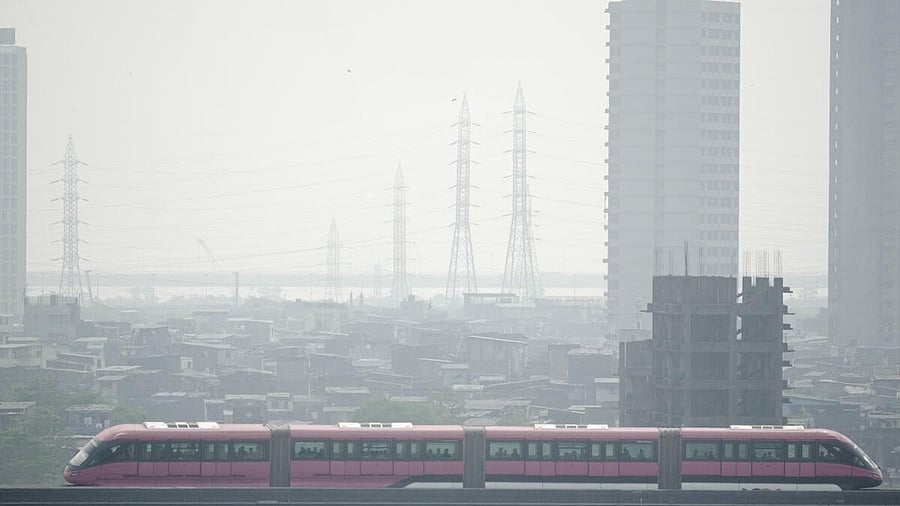
Air pollution in Mumbai
Credit: PTI Photo
Mumbai: Mumbai’s PM2.5 level of 36.1 μg/m3 is much lower than Delhi’s 107 μg/m3 but still represents a concerning increase from 35.2 μg/m3 in 2019.
Coinciding with the sixth anniversary of the National Clean Air Programme (NCAP), a report by Respirer Living Sciences highlights a concerning trend in Mumbai's air quality.
According to a report Towards Clear Skies 2025 using data from the AtlasAQ Platform, Mumbai’s rise in PM2.5 underscores the need for targeted measures to reverse this trend.
“Mumbai’s increasing pollution levels reflect the challenges of urban expansion, vehicular density, and localised industrial emissions. It’s crucial to address these issues now to prevent a steeper rise in pollution,” said Ronak Sutaria, Founder of Respirer Living Sciences.
Among metropolitan cities, Mumbai’s air quality is better than Delhi's but worse than Bengaluru's (33.0 μg/m3) and Chennai's (29.5 μg/m3), reflecting the need for regional improvements.
“While Mumbai’s air quality remains better than many cities, the upward trend is a red flag that demands immediate action,” added Sutaria.
In 2024, Mumbai's air quality showed a concerning 2.6 per cent increase in PM2.5 levels compared to 2019, with an annual average of 36.1 μg/m3, placing the city in the "Moderate" pollution category. While Mumbai performs significantly better than heavily polluted cities like Delhi (107 μg/m3), localised challenges continue to drive pollution levels upward.
Industrial activities, port operations, and heavy vehicular traffic resulted in Mumbai's elevated PM2.5 levels, with frequent daily averages exceeding 50 μg/m3.